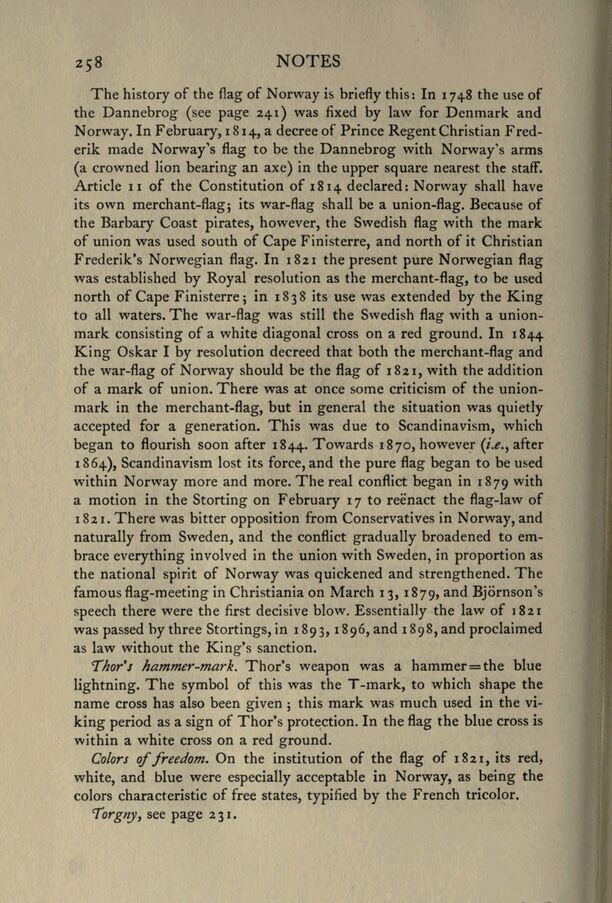
Full resolution (JPEG) - On this page / på denna sida - Sidor ...

<< prev. page << föreg. sida << >> nästa sida >> next page >>
Below is the raw OCR text
from the above scanned image.
Do you see an error? Proofread the page now!
Här nedan syns maskintolkade texten från faksimilbilden ovan.
Ser du något fel? Korrekturläs sidan nu!
This page has never been proofread. / Denna sida har aldrig korrekturlästs.
258 NOTES
The history of the flag of Norway is briefly this: In 1748 the use of
the Dannebrog (see page 241) was fixed by law for Denmark and
Norway. In February, 1814, a decree of Prince Regent Christian Fred-
erik made Norway’s flag to be the Dannebrog with Norway’s arms
(a crowned lion bearing an axe) in the upper square nearest the staff.
Article 11 of the Constitution of 1814 declared: Norway shall have
its own merchant-flag; its war-flag shall be a union-flag. Because of
the Barbary Coast pirates, however, the Swedish flag with the mark
of union was used south of Cape Finisterre, and north of it Christian
Frederik’s Norwegian flag. In 1821 the present pure Norwegian flag
was established by Royal resolution as the merchant-flag, to be used
north of Cape Finisterre; in 1838 its use was extended by the King
to all waters. The war-flag was still the Swedish flag with a union-
mark consisting of a white diagonal cross on a red ground. In 1844
King Oskar I by resolution decreed that both the merchant-flag and
the war-flag of Norway should be the flag of 1821, with the addition
of a mark of union. There was at once some criticism of the union-
mark in the merchant-flag, but in general the situation was quietly
accepted for a generation. This was due to Scandinavism, which
began to flourish soon after 1844. Towards 1870, however (i.e., after
1864), Scandinavism lost its force, and the pure flag began to be used
within Norway more and more. The real conflict began in 1879 with
a motion in the Storting on February 17 to reénact the flag-law of
1821. There was bitter opposition from Conservatives in Norway, and
naturally from Sweden, and the conflict gradually broadened to em-
brace everything involved in the union with Sweden, in proportion as
the national spirit of Norway was quickened and strengthened. The
famous flag-meeting in Christiania on March 13, 1879, and Bjornson’s
speech there were the first decisive blow. Essentially the law of 1821
was passed by three Stortings, in 1893, 1896, and 1898, and proclaimed
as law without the King’s sanction.
Thor’s hammer-mark. Thor’s weapon was a hammer=the blue
lightning. The symbol of this was the T-mark, to which shape the
name cross has also been given ; this mark was much used in the vi-
king period as a sign of Thor’s protection. In the flag the blue cross is
within a white cross on a red ground.
Colors of freedom. On the institution of the flag of 1821, its red,
white, and blue were especially acceptable in Norway, as being the
colors characteristic of free states, typified by the French tricolor,
Torgny, see page 231.
<< prev. page << föreg. sida << >> nästa sida >> next page >>